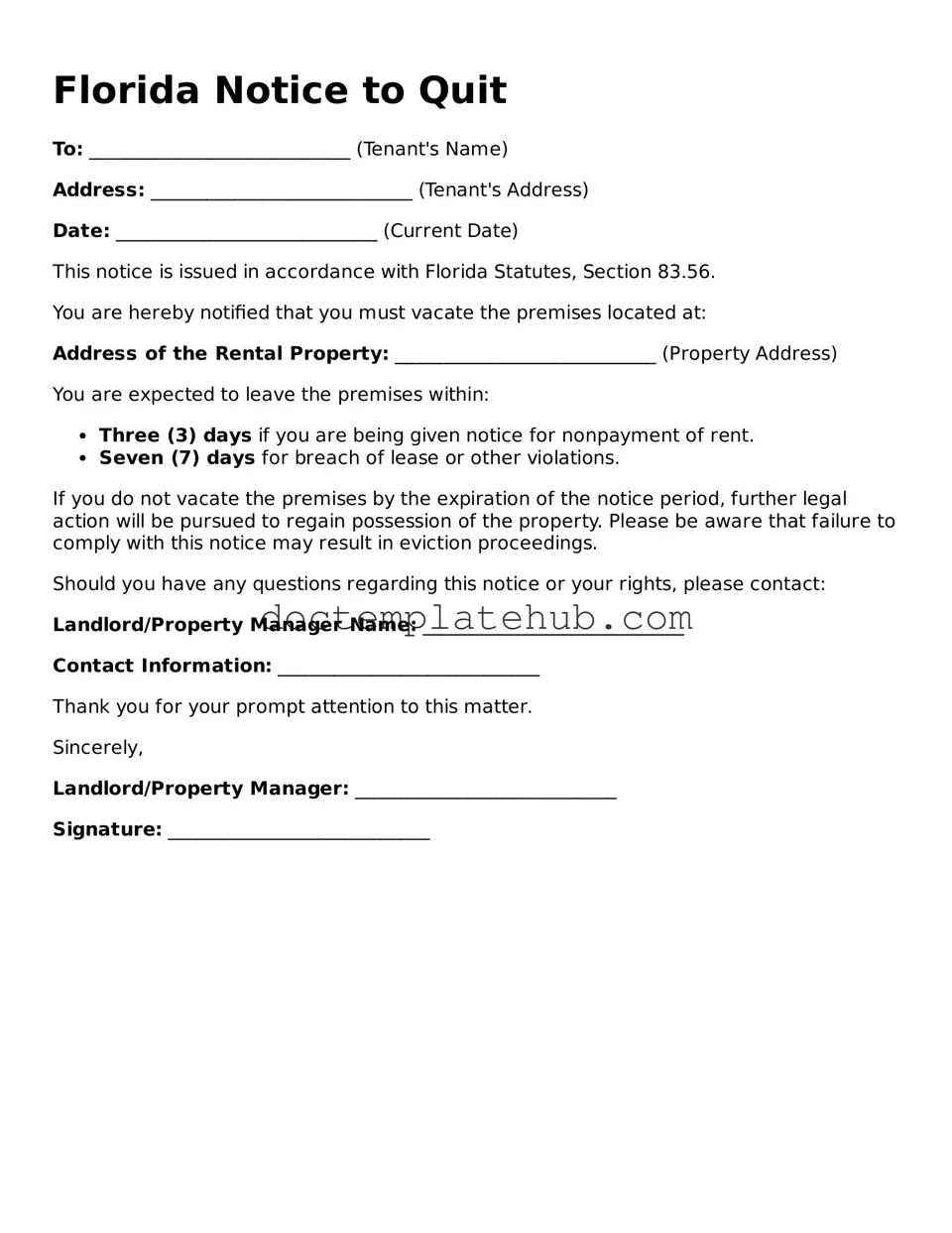What is a Florida Notice to Quit form?
The Florida Notice to Quit form is a legal document that a landlord uses to inform a tenant that they must vacate the rental property. This notice typically outlines the reasons for eviction, such as non-payment of rent or lease violations, and provides a specified timeframe for the tenant to leave the premises.
When should a landlord use a Notice to Quit?
A landlord should use a Notice to Quit when a tenant has violated the lease agreement or failed to pay rent. It serves as the first step in the eviction process, allowing the landlord to formally communicate their intent to terminate the tenancy. It is crucial to follow the proper legal procedures to avoid complications later on.
What information must be included in the Notice to Quit?
The Notice to Quit should include the landlord's name and contact information, the tenant's name and address, the reason for the eviction, and the date by which the tenant must vacate the property. It is important to be clear and concise to ensure that the tenant understands the situation.
How much notice is required before a tenant must leave?
The amount of notice required varies depending on the reason for eviction. For non-payment of rent, Florida law typically requires a three-day notice. For lease violations, the notice period may be seven days. It is essential to adhere to these timelines to comply with state regulations.
Can a tenant contest a Notice to Quit?
Yes, a tenant can contest a Notice to Quit. If they believe the notice is unjust or if they have rectified the issue, they can respond to the landlord. If the matter escalates, the tenant may have the option to challenge the eviction in court, where both parties can present their cases.
What happens if a tenant does not leave by the specified date?
If a tenant does not vacate the property by the date specified in the Notice to Quit, the landlord may proceed with filing an eviction lawsuit. This legal action can result in a court order that allows the landlord to regain possession of the property, often with the assistance of law enforcement.
Is a Notice to Quit the same as an eviction notice?
While a Notice to Quit is a type of eviction notice, it is not the final step in the eviction process. It is an initial notification that begins the eviction proceedings. An eviction notice is typically issued after the Notice to Quit period has expired and legal action has been initiated.
Can a Notice to Quit be served electronically?
Florida law does not specifically allow for electronic service of a Notice to Quit. It is generally recommended to deliver the notice in person or via certified mail to ensure that the tenant receives it. Proper delivery is crucial for the notice to be legally valid.
What should a landlord do if they are unsure about the process?
If a landlord is uncertain about the eviction process or the use of a Notice to Quit, seeking legal advice is advisable. Consulting with a lawyer who specializes in landlord-tenant law can provide clarity and help ensure compliance with all legal requirements.
